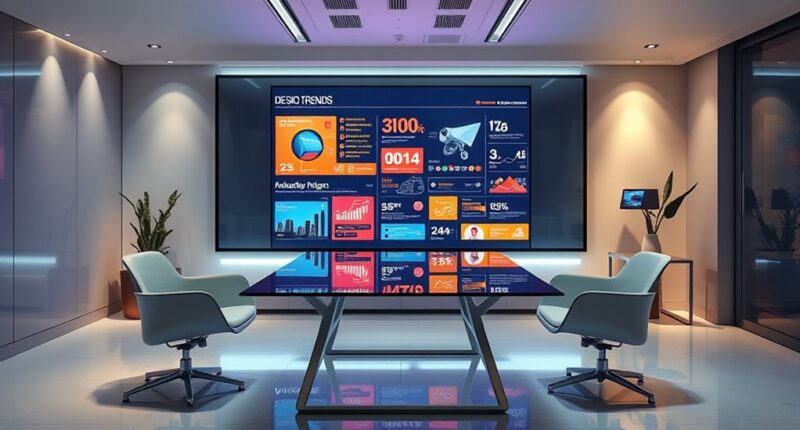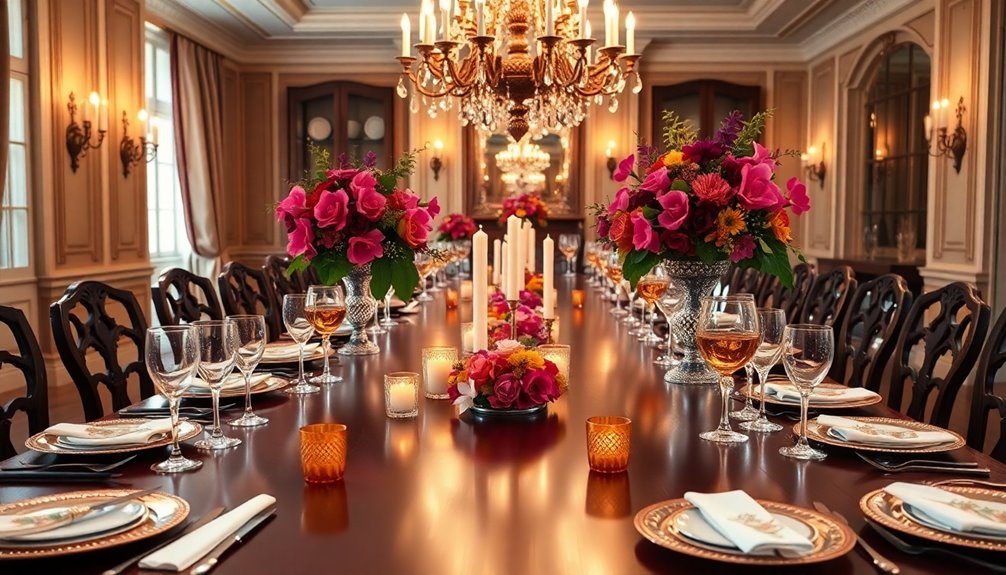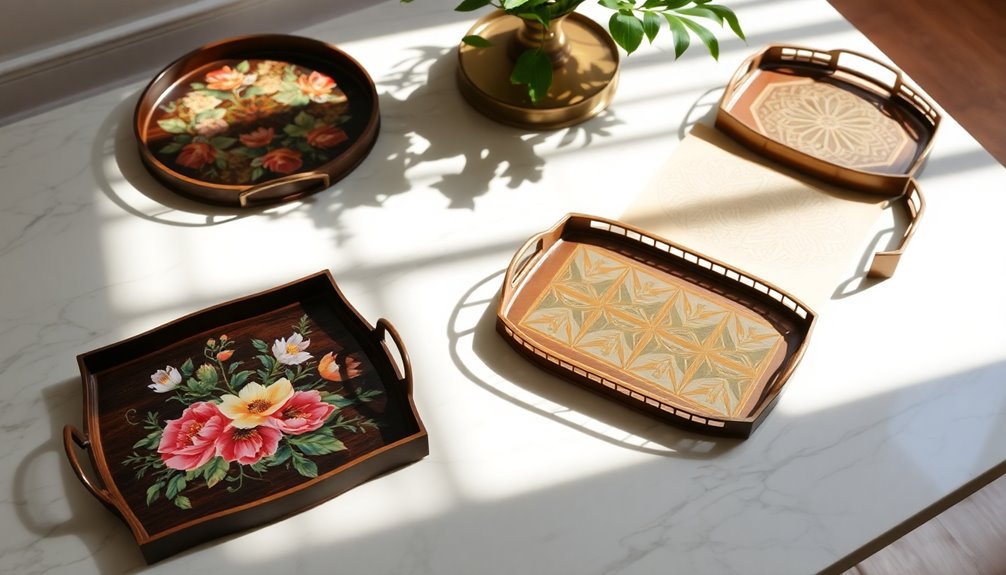In 2026, design will focus on sustainability, using renewable and biodegradable materials to appeal to eco-conscious audiences. You’ll see more immersive, multi-sensory environments that engage sight, sound, touch, and smell, creating stronger emotional connections. Personalization will thrive with adaptive visuals and data-driven interfaces that match individual preferences. Additionally, AI will boost creativity and streamline processes, while minimalism will blend sleek aesthetics with complex functionality. Keep exploring these trends to stay ahead in the evolving design landscape.
Key Takeaways
- Sustainable and biodegradable materials will dominate design choices, emphasizing eco-friendly practices and renewable resources.
- Multi-sensory environments leveraging immersive technology will create emotionally engaging user experiences.
- Personalization through adaptive aesthetics and data-driven visuals will enhance user engagement and emotional connection.
- AI-driven creative tools will streamline design processes, enabling rapid experimentation with complex concepts.
- Minimalist designs will incorporate functional complexity, maximizing utility while maintaining sleek, clutter-free aesthetics.
Embracing Sustainable and Eco-Friendly Design
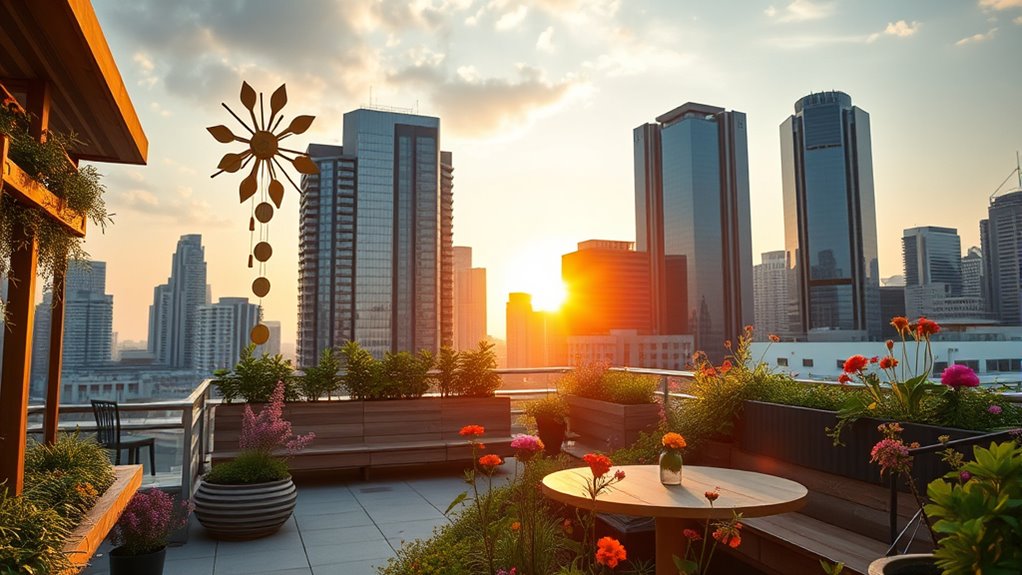
How can designers make a meaningful impact on the environment? By prioritizing sustainable and eco-friendly design choices, you can markedly reduce your projects’ ecological footprint. Using renewable materials, such as bamboo or recycled metals, ensures resources are replenished and less waste ends up in landfills. Additionally, adopting biodegradable packaging helps minimize plastic pollution, allowing materials to break down naturally without harming ecosystems. Incorporating these elements into your designs not only benefits the planet but also resonates with eco-conscious consumers. As sustainability becomes a key criterion, your commitment to environmentally responsible practices sets you apart. Embracing renewable materials and biodegradable packaging empowers you to create innovative, eco-friendly solutions that align with the future of sustainable design. Sustainable design practices are gaining prominence as consumers increasingly value environmentally responsible approaches.
The Rise of Immersive and Multi-Sensory Experiences

As technology advances, immersive and multi-sensory experiences are transforming the way you engage with design. Haptic feedback adds a tactile dimension, making interactions feel more real and intuitive. You’ll notice brands increasingly using sensory branding to create memorable, emotional connections through sight, sound, touch, and even smell. These experiences go beyond visuals, engaging multiple senses simultaneously to deepen engagement and reinforce brand identity. In retail spaces, immersive environments can evoke specific feelings or memories, enhancing the customer journey. As a result, you’ll see designs that stimulate your senses more vividly, blurring the line between digital and physical. Additionally, multi-sensory engagement techniques are being integrated into various environments to heighten emotional responses and create more impactful experiences. This rise in multi-sensory experiences will reshape how you perceive and interact with products, environments, and brands by making encounters more engaging and emotionally resonant.
Personalization and Adaptive Aesthetics
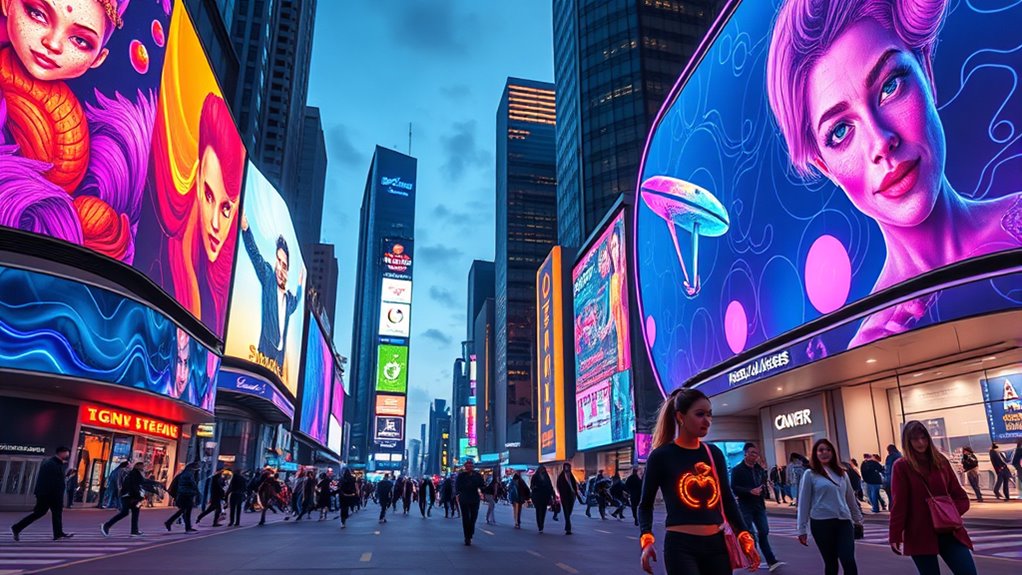
Personalization and adaptive aesthetics are set to revolutionize your interaction with design by making experiences more tailored and responsive. Expect dynamic typography to adjust in real-time, aligning font size, style, and layout with your preferences or context, creating a more engaging reading experience. Color psychology will play a pivotal role, as designs will adapt color schemes based on your emotional state or environment, enhancing connection and comfort. These personalized visuals not only improve usability but also foster a deeper emotional bond with brands and content. By leveraging data and user behavior, designers will craft interfaces that feel uniquely yours, increasing engagement and satisfaction. Additionally, incorporating innovative plant-inspired planter styles will bring a natural, lively touch to digital environments, further personalizing user experiences. Ultimately, this trend makes digital interactions more intuitive, emotionally resonant, and seamlessly aligned with individual needs.
Integration of Artificial Intelligence in Creative Processes

The integration of artificial intelligence into creative processes is transforming how designers and artists approach their work, making workflows more efficient and innovative. AI generated visuals enable you to quickly produce compelling images, inspiring new ideas and styles without starting from scratch. Automated design tools streamline repetitive tasks like layout adjustments, color matching, and font selection, freeing you to focus on the creative core. These tools adapt to your preferences, offering personalized suggestions that enhance your vision. With AI, you can experiment with complex concepts effortlessly, accelerating project timelines. This synergy between human creativity and machine intelligence opens new horizons, allowing you to push boundaries and explore innovative design solutions with unprecedented speed and precision.
Minimalism Meets Functional Complexity
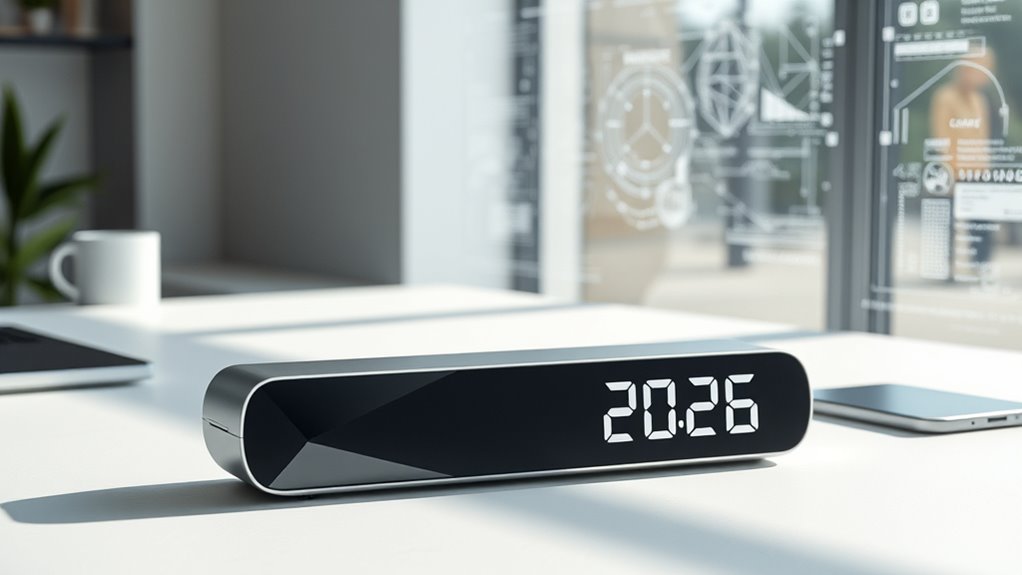
Minimalism is evolving beyond simple aesthetics to embrace functional complexity, challenging you to design spaces and products that balance sleekness with high capability. You’ll prioritize space efficiency, integrating multi-purpose elements that maximize utility without clutter. This approach demands a keen eye for visual harmony, ensuring that even intricate features blend seamlessly into clean lines and uncluttered layouts. By combining minimal design principles with advanced functionality, you create environments that feel both spacious and purposeful. This trend pushes you to rethink traditional boundaries, incorporating subtle details that serve multiple roles while maintaining an elegant appearance. Incorporating drivetrain components that are durable yet unobtrusive is essential to achieving this balance. Ultimately, minimalism meeting functional complexity results in designs that are visually striking, highly efficient, and tailored to modern needs.
Frequently Asked Questions
How Will Climate Change Influence Future Design Materials and Practices?
Climate change will push you to prioritize sustainable innovation and eco-conscious materials in your designs. You’ll need to source renewable, biodegradable, or recycled materials, reducing environmental impact. Expect regulations to tighten, prompting you to adapt your practices and embrace greener solutions. By integrating these eco-friendly choices, you’ll contribute to a more sustainable future while meeting consumer demand for responsible, environmentally-conscious designs.
What Role Will Virtual and Augmented Reality Play in Everyday Design?
Imagine stepping through a portal into a vibrant world—virtual and augmented reality create this gateway, transforming everyday design. You’ll navigate virtual interfaces that feel seamless, offering immersive experiences that bring ideas to life instantly. These tools become your paintbrushes and blueprints, making design more interactive and intuitive. As you explore, you’ll shape spaces and products with unprecedented creativity, blurring the line between imagination and reality in your daily design practices.
How Can Designers Ensure Accessibility in Highly Personalized Environments?
To guarantee accessibility in highly personalized environments, you should prioritize inclusive design principles and develop adaptive interfaces. This approach allows your designs to cater to diverse user needs, including those with disabilities. Incorporate user feedback and test your interfaces with varied audiences to identify barriers. By doing so, you create a more equitable experience that adapts seamlessly, fostering inclusivity and empowering all users to engage fully with your environment.
Will Ai-Generated Designs Retain Human Creativity and Emotional Depth?
You might wonder if AI-generated designs can keep human creativity and emotional depth alive. While AI can mimic styles, it often lacks emotional authenticity, which is crucial for genuine connection. To guarantee this, you need to prioritize AI ethics, guiding tools to enhance, not replace, human touch. By blending technology with your unique perspective, you preserve emotional depth, making designs that resonate deeply with people.
How Will Emerging Technologies Redefine the Concept of Functional Beauty?
Imagine technology as a sculptor shaping beauty from the clay of innovation; it will redefine functional beauty through biomimicry innovation, where nature’s secrets motivate smarter, more sustainable designs. Aesthetic ergonomics will become the brushstroke that guarantees form and function dance in harmony. Emerging tech will blur lines, creating objects that are not only visually stunning but also intuitively practical, transforming our interaction with everyday items into seamless, artful experiences.
Conclusion
As you embrace the future of design in 2026, remember that 73% of consumers prioritize eco-friendly options, making sustainability essential. By integrating AI and immersive experiences, you’ll craft spaces that feel personalized and innovative. Minimalism with functional complexity will redefine aesthetics, balancing simplicity and utility. Stay ahead by blending these trends, and you’ll create environments that captivate and inspire, shaping a future where design truly connects and evolves with your audience.
